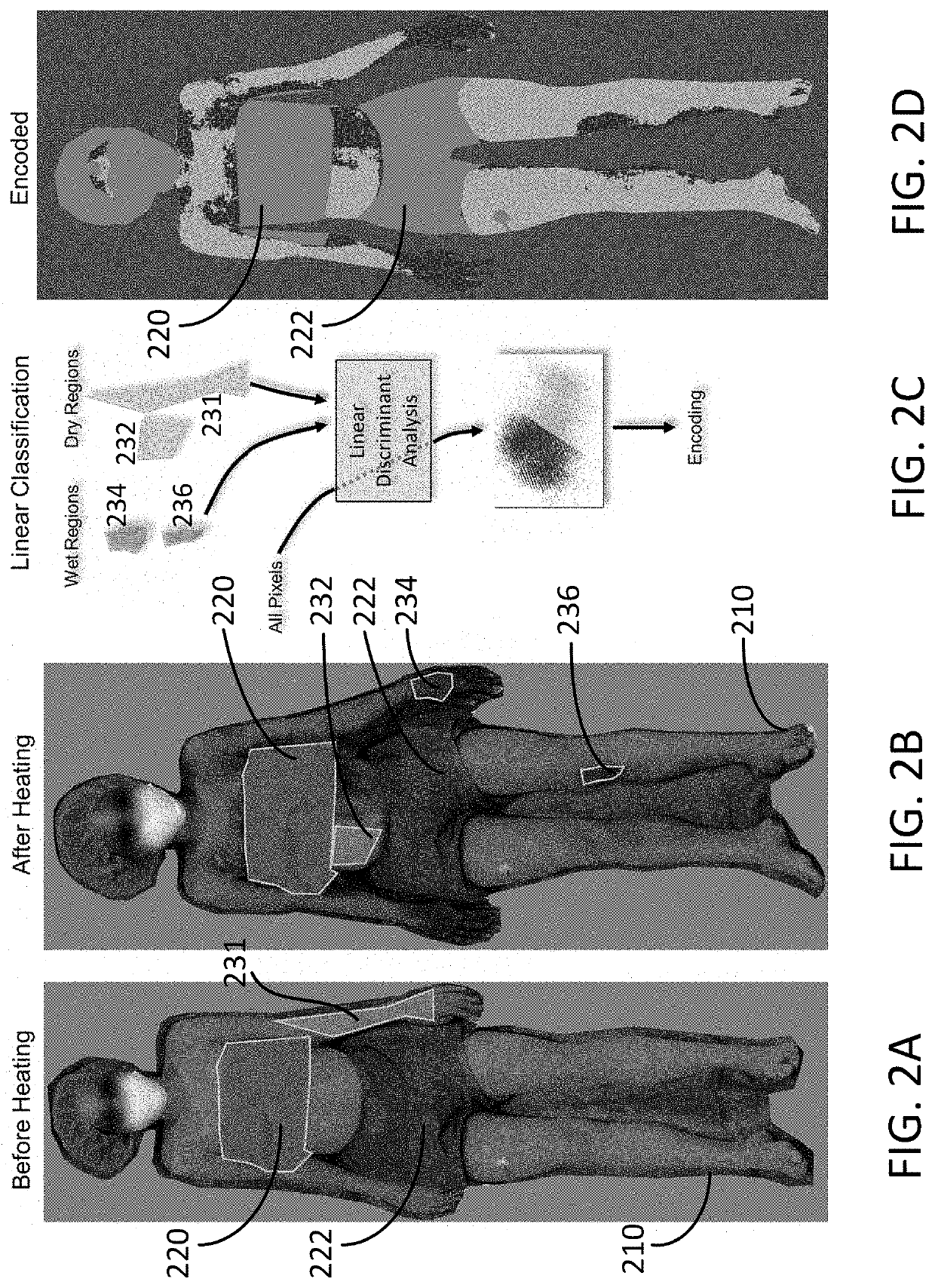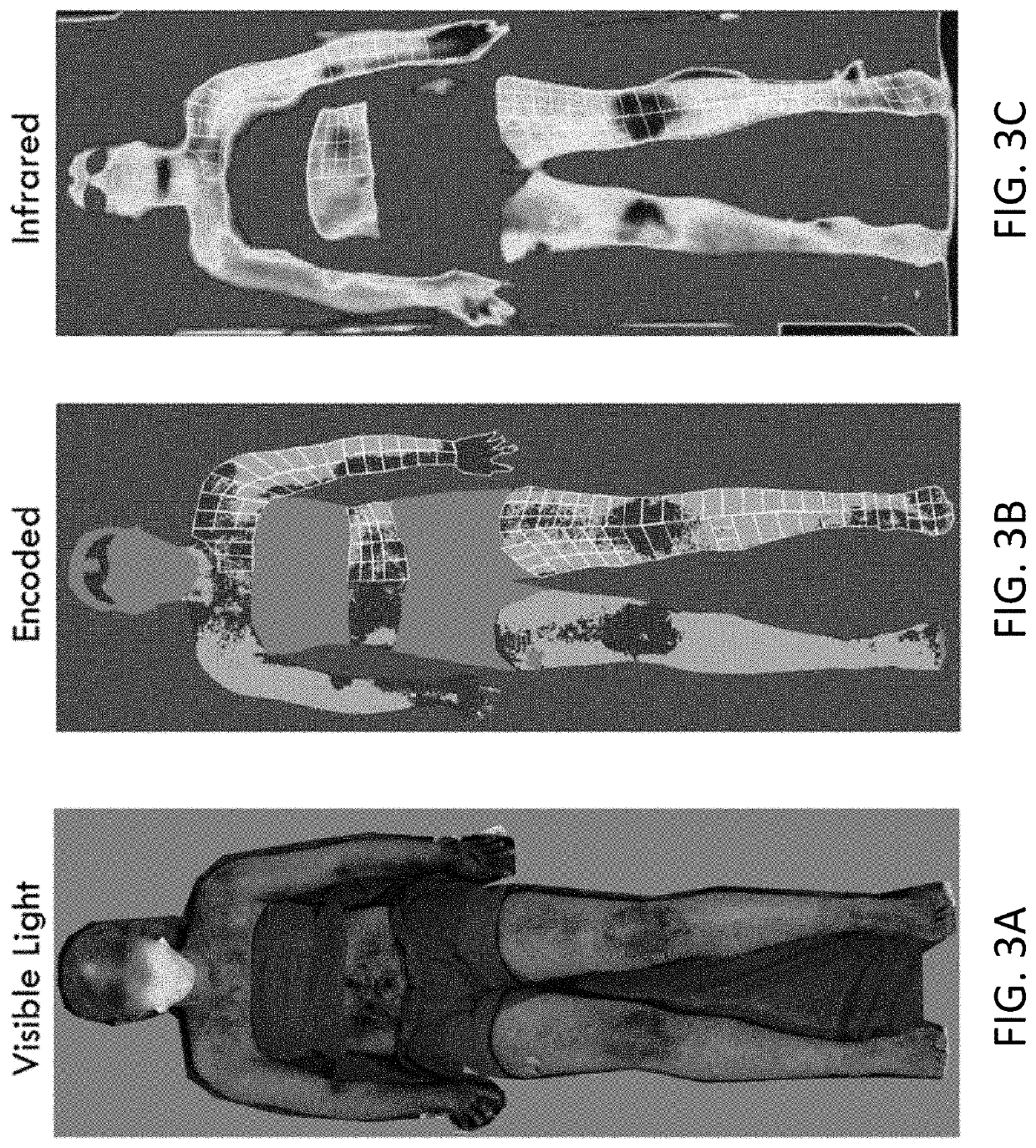Systems and methods for thermoregulatory sweat testing
a technology of sweat testing and system, applied in the field of diagnostics, can solve the problems of preventing widespread adoption, not being able to evaluate the most distal sites of the body, and sweat dysfunction impairing thermoregulation control in humans
- Summary
- Abstract
- Description
- Claims
- Application Information
AI Technical Summary
Benefits of technology
Problems solved by technology
Method used
Image
Examples
example 1
Novel Methods of Imaging and Analysis for Thermoregulatory Sweat Testing
[0103]In this exemplary study, we disclose novel methods that improve the standard TST methodology. The first uses a statistical classification method to partially automate the localization of sweating over the body surface when using the standard indicator powder. The second includes using changes in skin temperature caused by forced evaporative cooling to detect body regions which sweat, an approach that could eliminate the use of the indicator powder. Skin areas which produce sweat show a rapid drop in temperature with evaporative cooling induced by fanning compared to those areas without sweat. The thermographic measurements reproduce the spatial resolution of powder-based visible light imaging with less mess and discomfort for the patient.
[0104]The techniques described here were developed from the Ann & Robert H. Lurie Children's Hospital of Chicago clinical protocol for TST (which is based on the Mayo Clin...
example 2
Infrared Imaging of Evaporative Cooling as a Replacement for Indicator Dye Powder in the Identification of Neurological Disorders
[0128]The objectives of these exemplary studies are, among other things, to replicate previous work establishing that infrared imaging with evaporative cooling (stainless thermoregulatory testing; SST) could identify regions of sweating / non-sweating that well correlated with regions identified with the established method that uses indicator dye powder and visible light imaging; and to replicate these results in tests in which the indicator dye is not used, and to establish that infrared imaging with evaporative cooling alone could identify neuropathy as well as the standard method. For these studies, patients of the neurology service who had done thermoregulatory sweat testing (as part of clinical care, using the standard method) were recruited for repeat studies using the infrared method alone. In addition, several presumptively healthy participants were ...
PUM
 Login to View More
Login to View More Abstract
Description
Claims
Application Information
 Login to View More
Login to View More - R&D
- Intellectual Property
- Life Sciences
- Materials
- Tech Scout
- Unparalleled Data Quality
- Higher Quality Content
- 60% Fewer Hallucinations
Browse by: Latest US Patents, China's latest patents, Technical Efficacy Thesaurus, Application Domain, Technology Topic, Popular Technical Reports.
© 2025 PatSnap. All rights reserved.Legal|Privacy policy|Modern Slavery Act Transparency Statement|Sitemap|About US| Contact US: help@patsnap.com



